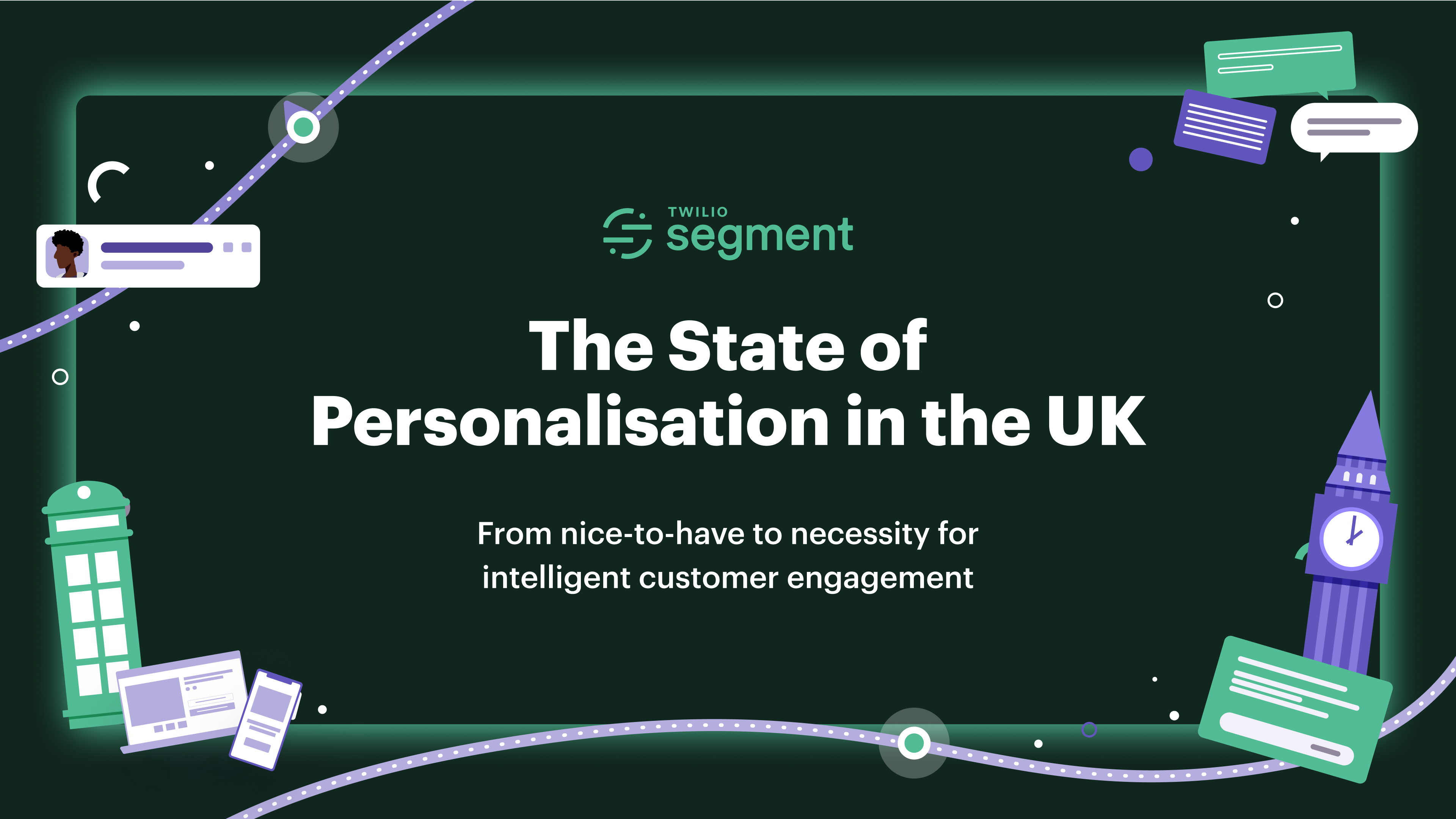Announcing The State of Personalisation in the UK
Insights for UK businesses about how attitudes, preferences, and experiences with personalisation have evolved over the past year.
Insights for UK businesses about how attitudes, preferences, and experiences with personalisation have evolved over the past year.

Last year, COVID-19 saw a surge of migration to digital channels, permanently changing the way consumers engage with brands online.
When we released our first State of Personalisation report back in 2017, we had identified that the shift to e-commerce had been accelerating. But we never could have imagined just how rapidly consumer expectations and behaviours would change.
To better understand how quickly attitudes, expectations, and experiences have evolved when it comes to personalisation, Twilio Segment surveyed 1,000 businesses and consumers in the United Kingdom. Our findings tell a compelling story about how consumer behaviour in the UK changed over the past 12 months, and how businesses reacted.
Below we highlight key insights from our new State of Personalisation in the UK report to explore the latest trends, and discuss how businesses in the United Kingdom specifically can use these insights to understand, and guide personalisation strategies moving forward.
As a consequence of rapid digital adoption in 2020, consumers' expectations rapidly outpaced what many brands were prepared to offer.
For the most part, many businesses are still notably behind in their personalisation efforts, and a gap remains between consumer expectations and reality.
However, compared to US shoppers (54%), consumers in the UK report their retail experiences are more personalised across the board (64%). This implies that UK businesses have been more effective at stepping up to meet their customer’s expectations for personalised digital experiences.
So why is this the case?
One explanation involves return on investment. Fewer UK businesses (less than 1 in 5) say tracking the ROI of personalisation efforts is a challenge, compared to 34% of their counterparts in the United States.
For most businesses, the transition to e-commerce is a permanent shift that won’t be undone, and those who get personalisation right have plenty to gain. In fact, 46% of UK consumers completed a new online purchase last year that they previously only ever purchased in-store.
According to our survey, 60% of all respondents are likely to become repeat buyers, and nearly half of all consumers in the UK are more likely to leave positive reviews after a personalised shopping experience as well.
What’s more, with mass adoption of digital channels, competition for consumer attention is on the rise. Because today’s customers are won and lost online, the brands that can offer the best experiences have a clear advantage.
As it stands, only 57% of UK businesses surveyed say they offer better personalisation than most brands they compete with, compared to 71% in the US.
This bodes well for companies in the United Kingdom investing in the required technology to offer more compelling, personalised experiences and remain competitive.
Throughout the course of the pandemic, new behaviours (online shopping, mobile food delivery etc) saw consumers jump from channel to channel at unprecedented rates. As a result, companies can easily have customer data spread across their website, social media, email, or dozens of other systems.
Our survey found that few businesses are prepared to deliver consistent, personaliesd experiences across channels. Less than 1 in 4 of respondents said they were investing successfully in omnichannel personalisation.
For UK businesses, the data shows the benefits of an omnichannel approach with customers reporting a variety of preferences for the touchpoints they use to interact with brands online.
28% of UK consumers say they like real-time website personalisation, and a greater percentage also enjoy messaging (like WhatsApp) to interact with brands than compared to consumers in the United States.
While social media is a critical aspect of omnichannel engagement as well, the differences are stark between the preferences of US and UK consumers.
In general, consumers in the United Kingdom are much more positive about personalised ads and online shopping on social media than US consumers. 64% say they like or love it, compared to just 38% of US consumers.
This trend is not lost on UK businesses as 34% of those surveyed in the UK currently offering social media have plans to personalise this year, compared to only 20% of those businesses in the United States.
To adapt to changing behaviours and preferences, business across the globe are making their customer engagement across every channel more personalised, timely, and impactful.
More and more businesses are eschewing marketing based on untrustworthy third-party data and moving towards the new gold standard — marketing with first-party data collected from customers themselves.
See more key personalisation insights from the United Kingdom in our State of Personalisation report here.

Our annual look at how attitudes, preferences, and experiences with personalization have evolved over the past year.